Everything is bigger in Texas, at least according to the popular folklore. Indeed, Texas is the largest of the contiguous 48 states. And if you’re thinking of planting bamboo in your Texas garden, it will have plenty of room to spread out. But is the Lone Star State a good place to grow bamboo? Better known for tornadoes and tumbleweeds, Texas is actually great for growing bamboo.
Covering nearly 270,000 square miles, Texas has several different climate zones, suitable for a diverse array of bamboo species. Eastern Texas, between Dallas and the Gulf Coast, is generally subtropical, making it hospitable for most varieties of bamboo. A few species of Arundinaria are even native to this region. The rest of the state, to the West, is mostly arid or semi-arid, with colder winters in the north, better for temperate bamboos.
This article is part of an ongoing series about growing bamboo in different parts of the country. Check out some of these other articles to learn more.
- Finding bamboo in California
- Bamboo in Colorado
- Cane Grass of Kentucky
- Tropical bamboo for Florida and the Deep South
- Growing bamboo in Pennsylvania and New England
- Growing bamboo in zone 7 and 8
Native bamboo species in Texas
A vast landscape of cattle grazing and oil rigs, Texas is not the first place we would associate with bamboo. But Texas is huge, and bamboo is full of surprises.
There are only three types of bamboo native to the United States, and they are endemic to the Deep South. The genus Arundinaria, according to most botanists, includes three species: A. appalachiana (Hill cane), A. gigantea (River cane), and A. tecta (Switch cane).
The distribution of these temperate bamboos extends from East Texas to the Atlantic, and from the Gulf Coast as far north as the Ohio River Valley. Despite their being unusually cold-hardy, these North American grasses really thrive in the warmer, subtropical climes around Texas, Louisiana, and Georgia.
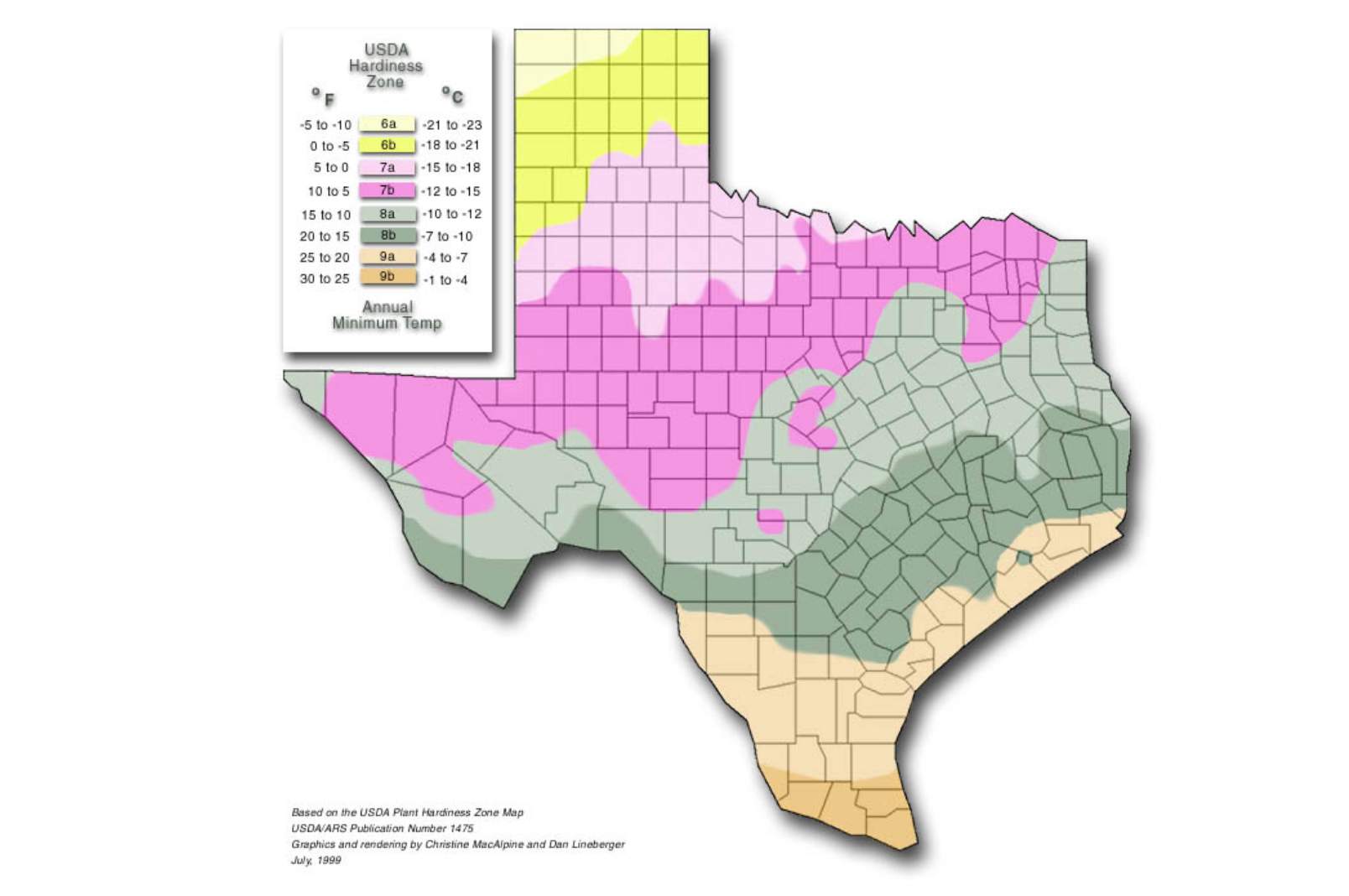
Climate conditions for bamboo in Texas
Geographers divide the Lone Star State into five different climate zones.
The Northern Plains lie roughly in the panhandle, alongside Oklahoma. The winters here can be harsh, with temperatures dropping to the low 20s or the teens. Most varieties of tropical bamboo won’t survive here, but plenty of cold-hardy species will.
The far west of Texas, known as the Trans-Pecos Region, is mostly made up of the Chihuahuan Desert. This may be the least hospitable area in Texas to cultivate bamboo. But you can always irrigate or select a drought-tolerant species.
The central and southern portion of Texas, west of Dallas, makes up Hill Country and includes the Edwards Plateau. Geographers consider this the transition zone where the American Southeast meets the Southwest. Summers are hot and humid and winters are usually mild but can be severe, as with the freak storm of February 2021. The region is suitable for most varieties of bamboo.
Eastern Texas, roughly between Dallas and Houston, comprises the Piney Woods region, with a temperate forest that extends into Louisiana and Arkansas. This part of the state is especially humid and subtropical, with the state’s highest rainfall, making it the best place in Texas to grow giant, tropical bamboo varieties.
Finally, South Texas, along the Rio Grande to Corpus Christi, is the warmest part of the state, but with much less precipitation than the Piney Woods. Tropical bamboos can also survive here but will require more irrigation.

Bamboos to avoid in hot weather
When selecting your bamboo, keep in mind that some types of bamboo really prefer cooler weather. This is especially true for some of the more ornamental varieties like Square Bamboo and Walking Stick Bamboo, of the genus Chimonobambusa.
Some cold-hardy bamboo from the mountains will also do poorly in the Texas heat. These include genera like Fargesia and Himalayacalamus.
If you do end up with one of these heat-sensitive bamboos, just be sure to provide them with adequate shade and regular watering.
What species of bamboo to grow in Texas
Choosing the right species of bamboo for your Texas garden means looking at a few different criteria. The most important factor is going to be the climate, so we’ve divided this section according to the state’s five climate zones.
Then you probably want to consider whether you want a clumping bamboo, one that will remain fairly well contained, or a running bamboo, one that will spread more vigorously to cover a larger area.
You also need to think about why you’re planting bamboo. Do want a privacy hedge that runs along the side of your home or your property? Are you designing something akin to a Japanese garden, with space for meditation and zen access? Or are you looking to harvest your bamboo for its sturdy poles to use for crafts and building, or for a commercial enterprise?
With those considerations in mind, find your region below, and take a look at some of the following options. Then you can visit our Directory of Bamboo Nurseries.

Northern Plains
In the cool plains of Northern Texas, where winter temps fall below 0º F, you’ll do best with a species of temperate bamboo. Most cold-hardy bamboo varieties are runners, which means they tend to spread pretty quickly. Therefore, you’ll want to use a rhizome barrier or some other containment strategy to keep the bamboo from getting out of hand.
The most common genus of temperate bamboo is Phyllostachys, which includes a huge variety of species, both big and small. Most of them spread fast and grow thick foliage, great for privacy screens. For building purposes, Giant Gray Bamboo is one of the best options. Commercial farmers are also fond of Red Margin Bamboo, P. rubromarginata. If you’re looking for an ornamental, P. nigra, or Black Bamboo, is one of the most popular.
Other species like Arrow Bamboo and Temple Bamboo are very attractive and cold-tolerant, but slower to spread and less likely to become invasive.
If you’d rather plant clumping bamboo, I’d recommend something from the genus Fargesia, hardy to minus 10 or 20º. They’re relatively small and slow-growing, but extremely hardy.
You might also try Chusquea of South America. Most of these bamboo varieties are medium-sized, and they can handle a wide range of temperatures, from 0º to 100º. They have interesting coloration on the culms, so they look good in the garden. They also have solid stems (not hollow), which is unusual, but also a favorable feature for some crafts and projects.

Trans-Pecos
In the driest part of the state, you’ll want to go with a drought-tolerant variety of bamboo. Here in zones 7 and 8, you won’t need something terribly cold-hardy. My best suggestion would be to invite a native from south of the border. Mexican Weeping Bamboo is exactly what the name says. The beautiful specimen grows naturally in Mexico, including some of the drier regions. It has thin culms with delicate leaves that cascade gracefully and waft in the breeze.
Check out our in-depth article on Drought-tolerant Bamboo for more ideas.
Hill Country
In this region of diverse vegetation, you can do well with most types of bamboo, with the exception of the most tropical varieties that need a Floridian climate to flourish. All of the bamboo varieties mentioned above will do fine here.
You can also plant something from the genus Bambusa, which are chiefly subtropical bamboos with a clumping growth habit. B. oldhamii, sometimes called Chinese Timber Bamboo, is one of the most popular bamboo species. Growing to heights of 50 or 60 feet, it looks beautiful in the garden and has culms that are extremely strong and fit for construction.
This genus also includes an enormous variety of bamboos in different sizes and colors, and some with very attractive stripes that gardeners always love. B. multiplex ‘Alphonse Karr’ is particularly stunning. B. malingensis ‘Seabreeze’ is another popular specimen, and fairly drought-tolerant to boot.
Hardier than many other types of tropical bamboo, most species of Bambusa can tolerate winter temperatures down to around 20º F.
Check out our list of The 10 best bamboos for your garden for more ideas.
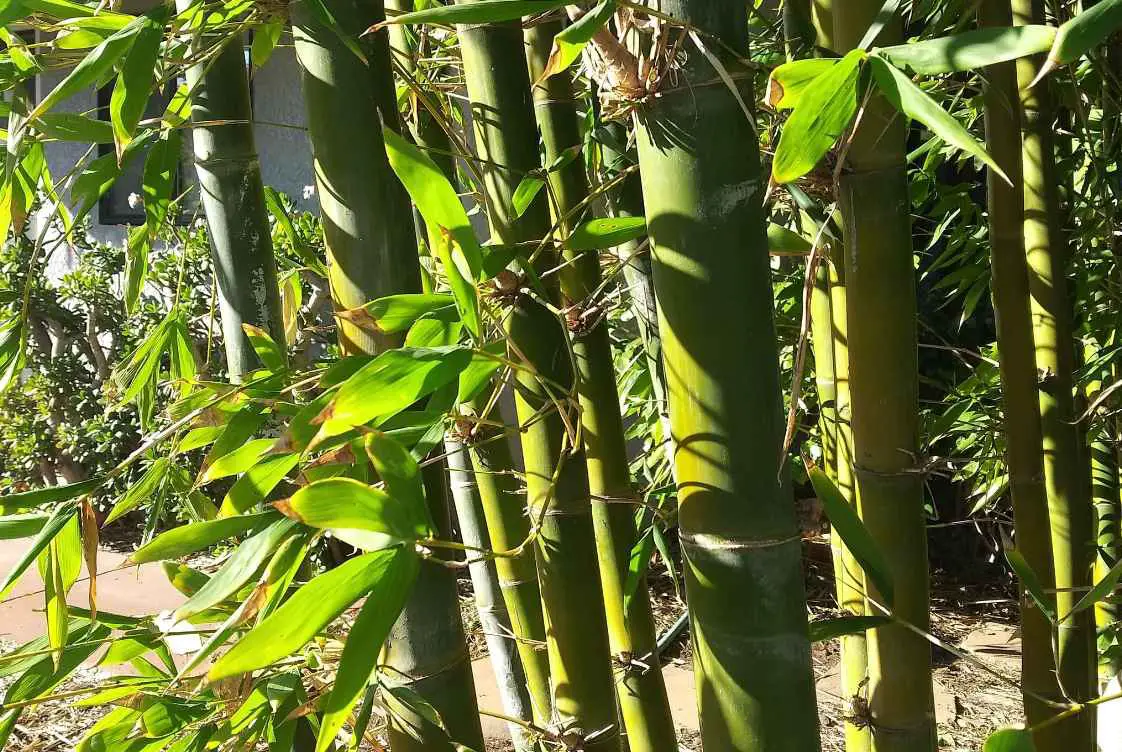
Piney Woods
The wettest part of the state, Eastern Texas has the best climate for growing some of those astonishing species of giant tropical bamboo that don’t generally do well in North America.
The genus Dendrocalamus includes some of the most impressive species, such as D. giganteus and D. sinicus. They might not get as big in Texas as they would in Thailand or Indonesia, where they often exceed heights of 100 feet. But they will certainly give you something to brag about.
You can also try some more exotic varieties like Blue Bamboo (Bambusa chungii). Or brighten your garden with some Schizostachyum brachycladum, better known (and easier to remember!) as Sacred Bali Bamboo.
Check out our in-depth article on Tropical Bamboo for the Deep South to learn more.
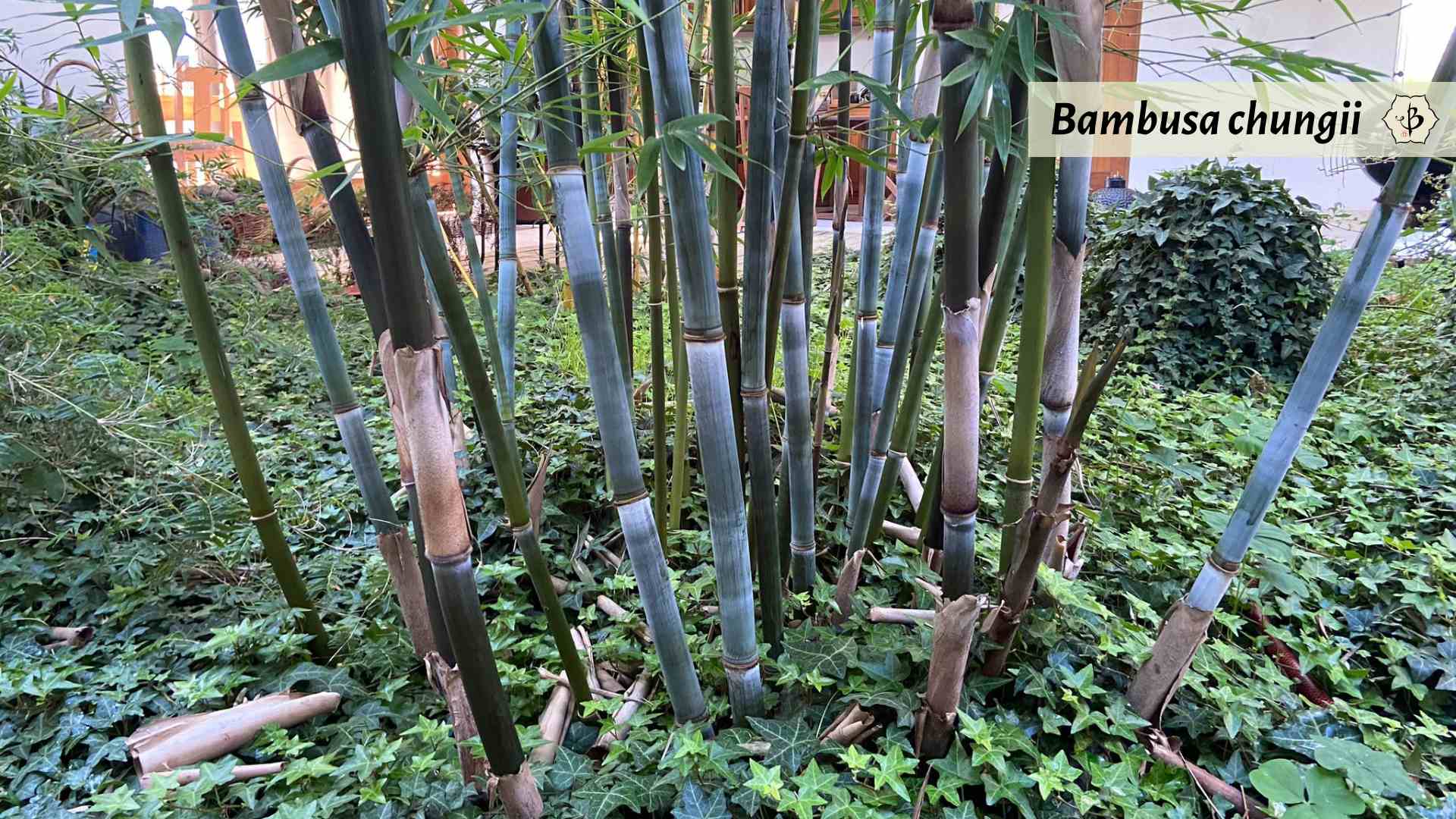
South Texas
With sufficient irrigation, you can grow most of the bamboos listed above in this hot and dry landscape. That includes the giant subtropical species. In zones 9a and 9b, winter frost will hardly ever be an issue. But even if you water them regularly, they probably won’t look as lush as they would in a climate with more relative humidity.
To reduce your water consumption, refer to the section above for the Trans-Pecos region.
Where to find bamboo in Texas
When it comes time to purchase bamboo, or just admire a stunning grove of bamboos flourishing here in Texas, head over to one of the state’s leading bamboo specialists.
- Bamboo Texas: Specializing in clumping bamboos and privacy screens. Open by appt. only. Hockley, TX (281) 772-1875
- Houston Bamboo Nursery: Mostly specializing in Bambusa and other clumpers. Open 7 days. Houston, TX (832) 713-4319
Meanwhile, back on the ranch
If you’ve enjoyed learning a thing or two about bamboo in the Lone Star State, you might also wanna saddle up and take a gallop through some of our other helpful articles.
- The best tools for bamboo gardening
- Growing bamboo in the desert
- Bamboo species for building and construction
- 26 Bamboo products from A to Z
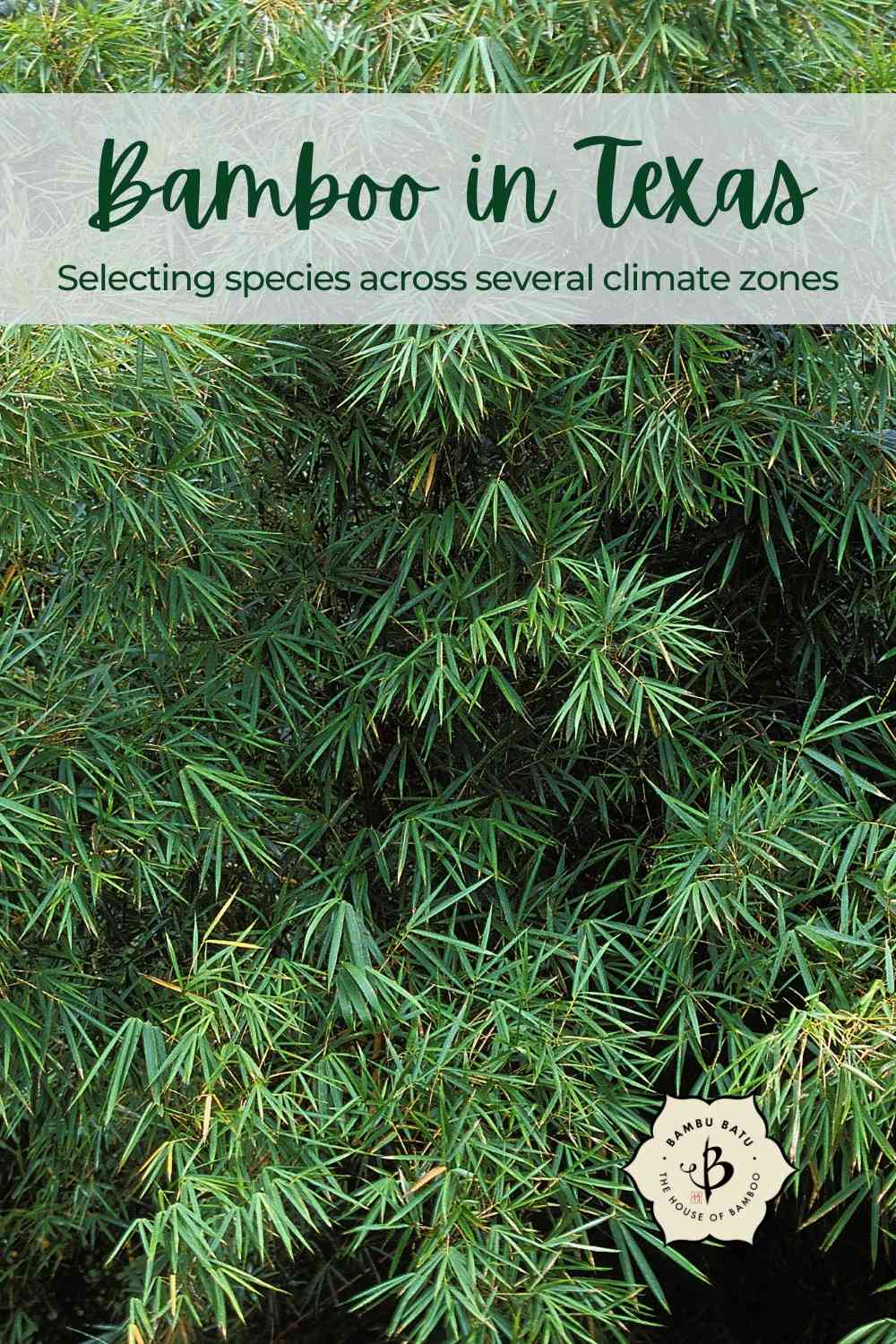

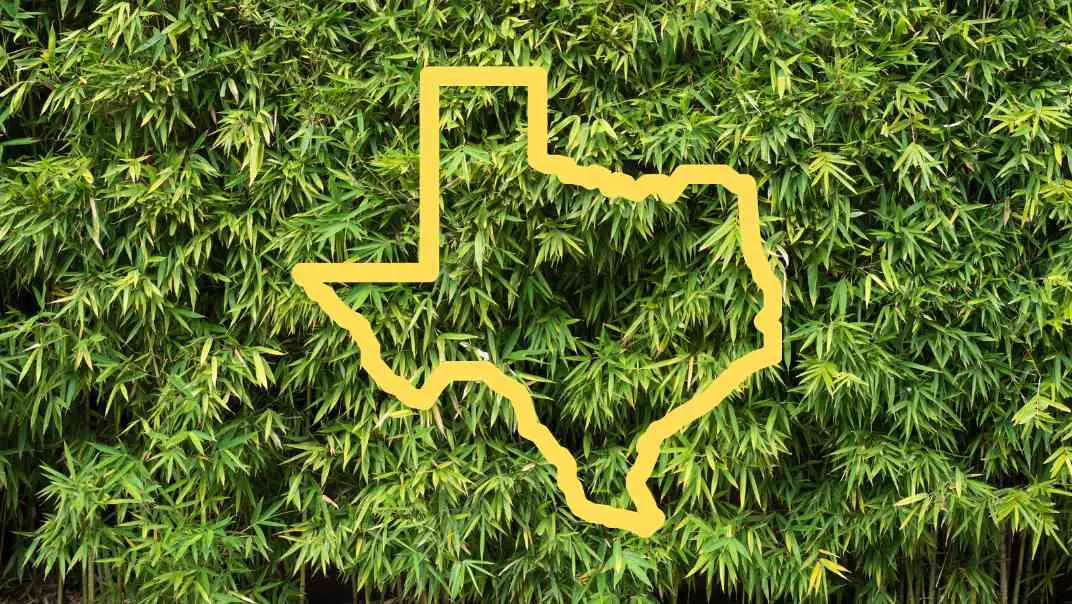
























We invested over $10K into Graceful bamboo 4 years ago. It was planted to spec, cared for, fertilized as recommended and after that freeze a couple of years ago, we lost half of it. This latest arctic blast will probably kill off the rest of it. Don’t believe growers who tell you it will survive zone 8 because it is a lie. We even wrapped and protected clusters and it did no good. Graceful is one of the most highly recommended but do not install it regardless of the claims.
Hi Bal, So sorry to hear that. Bambusa textilis ‘Graceful’ is an excellent specimen, but it’s subtropical and not well suited for tropical blasts. Climate change has made it increasingly difficult to select the right species for a given region. You’ll do better with a runner bamboo like Phyllostachys atrovaginata or Ph. viridis Robert Young.